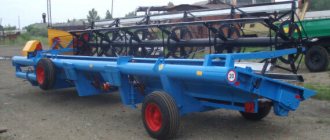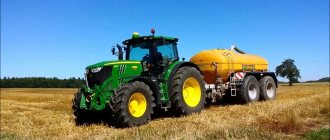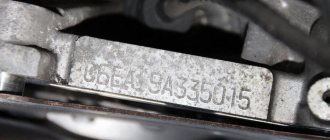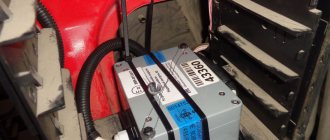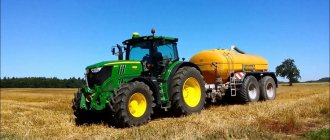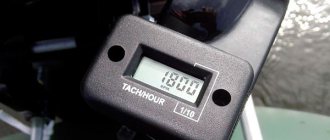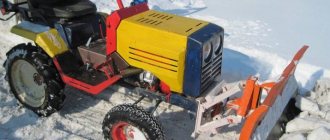Anyone more or less knowledgeable about cars and their design knows perfectly well that the number of cylinders in an internal combustion engine (ICE) should ideally be even, and the most balanced ICEs are in-line 6-cylinder and V-shaped 12-cylinder.
It is quite obvious that the engineers of the German automaker Audi are not fools either, but they still developed an in-line 5-cylinder engine and it is clear that this was done for a reason. But why did Audi need such a strange engine? Let's figure it out.
How it all began, or direct injection
No matter how pretentious it may sound, it was the autumn of 1989 that became the starting point of the beginning of a new era for the European passenger diesel industry. The presentation by VAG of the Audi 100 TDI (C3/44 body) caused a lot of noise, both in the automotive press of that time and among engine engineers. The 2.5-liter turbodiesel of this Audi 100 Avant was radically different from other diesel engines. The new power unit, which received the factory designation 1T, was equipped with a fundamentally different power system - now diesel fuel was injected not into the pre-chamber located in the cylinder head (cylinder head), but directly into the cylinder itself.
Electronic injection pump
In this regard, the high-pressure fuel pump (HPF) received control electronics, which was responsible for the moment of injection and made it possible to accurately dose the amount of injected fuel. Therefore, the new engine managed to retain such characteristics of old diesel engines as high torque and low specific fuel consumption and, at the same time, significantly exceed their dynamic performance, actually becoming equal to those of gasoline power units. The debuting innovative fuel injection system received the brand designation TDI (Turbo Diesel Injection).
Unpretentious design
Like the 2.4-liter prechamber turbodiesels that preceded it, the 1T engine received a cast-iron block with an in-line arrangement of five cylinders. The cylinder head of the new engine was cast from light alloy and had a single camshaft (SOHC), which was responsible for operating 10 valves (2 per cylinder).
Thanks to the new TDI injection system, the 1T engine developed a power of 120 hp. and had an excellent torque for those times of as much as 265 Nm! Production of this power unit continued until the debut in 1991 of the new generation Audi 100 (C4/4A body) and, accordingly, the new 2.5 TDI engines.
Safety of Audi 100 C4
To ensure the safety of the Audi 100 in the 45 body, manufacturers have provided a special system called procon-ten. This system involves optimizing the vehicle body so that various impacts have minimal impact on the occupants.
Even if the driver is driving with his seat belt fastened, in a severe collision there is still an extremely high probability of injuring himself on the steering wheel. Therefore, the safety system ensures that the steering wheel moves away from the area of possible impact towards the hood. In this case, all seat belts are tensioned simultaneously, so that people in the front seats will experience relatively low loads.
The Audi 100 C4 took an extremely original approach to the design of the side members. A special design allows them to deform during impact, thereby absorbing most of the energy. Then all this energy is evenly distributed throughout the frame and dissipated.
Audi 100 C4 (rear and side view)
Second generation of inline fives
The first-born in the line of diesel engines of the C4/4A body was the 115-horsepower AVR unit, which was produced from December 1990 to 1992, structurally similar to its predecessor. A little later, it was joined by an AAT turbodiesel of the same power, which had an excellent torque of 265 N/m at 1900 rpm and was in production almost until the change in the model range.
The line of five-cylinder 2.5 TDI engines was crowned by the 140-horsepower AEL power unit that appeared at the end of 1994, which was installed on the last Audi 100, which had survived the restyling, renamed A6. This motor was installed until the end of the model's production in 1997. With the AEL engine, the Audi A6 TDI was able to reach a maximum speed of almost 200 km/h. In addition, thanks to the excellent torque characteristics of the flagship AEL turbodiesel (maximum 290 Nm is available already at 1900 rpm), the car had excellent acceleration dynamics for that time.
Appearance
Exterior
In terms of design, the Audi 100 45 is a typical product of the early 90s. The look may seem a bit dated now, but is still acceptable. The bodies of all modifications were made of durable galvanized steel and were resistant to corrosion. However, over time, rust still appears, affecting the wheel arches first. The process can speed up significantly if you are involved in an accident.
Read also Review of the interior and characteristics of the new 2019 Audi A6
Compared to its predecessors (for example, the Audi 100 C2), the car has become more rounded and streamlined. Similar approaches were then used more than once by the German manufacturer when restyling other models. The rectangular headlights still look quite stylish, not to mention the huge hood. The car looks extremely solid. At the same time, it is perfect for tuning in the Stance style.
Audi 100 C4 (side and front view)
Interior
The interior of the Audi 100 C 4 is quite spacious and comfortable to accommodate passengers. The back row can easily accommodate three people without any difficulty. The driver's seat is equipped with many adjustments, allowing it to be customized for each individual user. The finishing can be leather or velor. Additionally there are walnut wood inserts.
Even in the poorest configuration there is power steering and ABS. And in full versions it is quite possible to find functional cruise control, electronic windows, as well as a seat heating system.
There are a large number of glove compartments and pockets for storing things. The trunk of the Audi 100 C4 station wagon can be expanded by folding the rear seats.
On the dashboard at any time you can see the clock, oil level indicator, oil temperature, fuel indicator and other important information about the system.
Inline "five" under the hood of Volvo
The remarkable characteristics of the AEL engine did not go unnoticed by automotive engineers at Volvo, which in those years did not have a passenger diesel engine of its own design. And since 1996, having undergone some design changes in terms of attachments and electronics firmware, the AEL turbodiesel under the designation D5252T appeared on Volvo 850 (LS-LW/L-series) cars. He worked successfully under the hoods of the “Swedes” until 2001, successfully surviving the restyling of the model and its renaming to Volvo S70/V70.
As for the Audi company itself, along with the departure from the scene in 1997 of the first generation of the Audi A6 model (C4/4A body), reliable AEL turbodiesels were almost immediately discontinued. It was replaced by a whole family of structurally new 2.5-liter V6 TDI turbodiesels.
“Millionaires”: what is the secret to the reliability of Audi inline 5-cylinder turbodiesels?
Audi's 2.5-liter five-cylinder turbodiesels are very reliable power units - all the technicians who specialize in repairing such engines claim that with proper maintenance, these engines can last at least 500 thousand km to the first "overhaul". And, according to motorists, you really have to be a “very gifted” owner to “kill” a very unpretentious and reliable 2.5 TDI in-line turbodiesel!
The “illnesses” that arise with AAT/AEL units, as a rule, are of an “age-related” nature and are caused by the truly enormous mileage of the units we have, as well as the barbaric operation of these wonderful engines.
Conclusion
Galvanized body, high-quality assembly, reliability of many parts and assemblies, as well as the highest comfort - these are the main trump cards of used hundred parts. Therefore, these cars are in demand on the secondary market, and even the first years of production are valued quite expensively. The price varies depending on the technical condition of the car, equipment and year of production. It is strongly recommended for those car enthusiasts who are able to satisfy the highest needs of the car to purchase these cars used, because the German brand is among the leaders in terms of the cost of servicing.
Source
What problems can you encounter with the 2.5 TDI?
When operating a 2.5 TDI in-line engine, the following breakdowns may occur (please note that they all occur due to external “irritants” and human factors):
- timing belt breakage due to “missing” the replacement period;
- overheating and, as a result, cylinder head deformation;
- failure of hydraulic compensators due to switching to cheap oil;
- coking of valve stem seals due to the transition is not an unsuitable oil;
- turbine failure due to old age;
- EGR valve jamming;
- wear of Bosch VE37 injection pump;
- failure of the air flow meter.
Ignition system coil and switch
Ignition in VR5 10-valve engines is represented by a commutator and coil module. The spark plugs are connected to the ignition coil by high-voltage wiring.
As the mileage increases, the ignition coil housing cracks and crumbles, and the contact pin may burst. Because of this, in some cylinders the fuel ignites late or does not ignite at all. The problem is resolved by replacing the module.
If after this the misfire is still observed, then it makes sense to check the ignition switch by ringing contacts 2-6. If there is no response from one or more of them, the switch also necessarily changes.
Timing belt: breaks due to the owner’s negligence.
Contrary to popular belief, 2.5 TDI in-line turbodiesels do not forgive neglect of the timing belt replacement interval prescribed by the manufacturer. Yes, indeed, the timing drive is structurally simple, and the timing rollers are very durable and can often “run” much longer than the belt itself. (As a result, many owners decide on the need to replace them immediately after a visual inspection of the rollers, and change them every other time.) However, we must remember that the factory replacement interval for timing drive parts is 120 thousand km, and in our operating conditions – no more than 90 thousand kilometers. Saving on replacement intervals and spare parts is fraught with disaster - a broken belt leads to a “friendly meeting” of valves and pistons, which entails a major overhaul of the turbodiesel or the search for a used contract engine.
Saving on motor oil and its consequences
Despite their general unpretentiousness, these engines are very demanding in terms of quality and compliance with engine oil change intervals. It won't work to pour the KAMAZ "spindle" - even engines with mileage of over a million are required to use "synthetics" with a viscosity of 5w-40 according to SAE.
Ignoring this requirement leads to the premature death of hydraulic valve compensators, which on these engines can last up to 300 thousand kilometers. Prolonged ignoring of “dead” knocking hydraulic pushers leads to damage to the cylinder head seats. In this case, you can’t get away with replacing relatively inexpensive compensators - you’ll have to look for a used cylinder head in good condition.
Another problem that arises when saving on the quality of the motor oil used is coking and failure of the valve stem seals. However, until a truly critical oil problem appears, many owners ignore this problem, especially since it does not initially have devastating consequences for the engine itself.
Leaks in the thermostat housing, coolant temperature sensor, cooling system pump
At the rear end of the VR5 engine there is a cooling system flange with a thermostat inside (thermostat housing). On cars with significant mileage, a leak appears between this splitter and the engine, and the plastic of the housing cracks. It is not easy to replace it due to its location.
In addition to the thermostat, the splitter also contains an antifreeze temperature sensor. It is not uncommon for its body to become covered with cracks. This is another reason for coolant leaks.
Wear of fuel injection pump
Another age-related problem with 2.5 TDI inline-fives is a drop in fuel injection pump performance due to its natural wear. “Symptoms of the disease”: decreased engine thrust, interruptions in its operation, difficult “cold” starting. The reason for this lies in the fact that on high-mileage injection pumps, a drop in injection pressure occurs due to wear of the boost pump built into the unit, as well as internal wear of the injection pump body itself. In any case, solving the problem is a serious matter - from the options: a rather expensive repair of the injection pump with the replacement of the pump housing with a new one and the use of a repair kit, or searching for a used unit, which is also quite burdensome financially.
The Bosch VE37 rotary-distribution injection pump itself is very reliable and, provided that normal diesel fuel is used and the fuel filter is replaced in a timely manner, it can cover the same 500 thousand km before repair as the turbodiesel itself.
Idle problems
Rough idle is a common problem with VR5 engines. The main reason for floating speed is air leakage outside the air flow sensor (flow meter). The easiest way to determine the location of depressurization is to use a smoke generator to pressurize the intake manifold. Air typically passes through the PCV valve body, intake manifold variable geometry system, or throttle valve seal.
Jumping or increased idle speeds also appear when the throttle valve or the “flute” wedge of the mechanism for changing the geometry of the intake manifold is dirty.
The engine may also vibrate noticeably if there is a malfunction in the ignition system.
Some aspects of searching for used 2.5 TDI units
Considering the age of these power units (and the “youngest” of them is no less than 17 years old), owners of cars with 2.5 TDI “fives” have to face difficulties in finding certain used components for these engines.
The selection of units is facilitated by the fact that, unlike V6 turbodiesels, 2.5 TDI in-line turbodiesels are unified among themselves in most spare parts. Thus, the flagship AEL turbodiesel has a technical volume of 2461 cm3 - similar to the AVR/AAT engines and, accordingly, a common cylinder block, piston group, connecting rods, crankshaft, cylinder head assembly, intake and exhaust manifolds.
The differences between AAT and AEL motors are as follows:
- Injection nozzle nozzles (injectors with the original manufacturer marking 046 130 201E were intended for the AAT engine, and with the number 046 130 201F for the AEL turbodiesel).
- Different pitch and angle of inclination of turbocharger blades.
- Different profiles of distribution cams (wavy washers) of injection pump
- Different electronic engine control units and, accordingly, different software (software).
- “Little things” on motor attachments in the form of various generators, crankshaft pulley dampers and others.
The D5252T turbodiesel Volvo also has its own differences - despite the use of VAG's proprietary TDI injection system, interrogation of the ECU drive of this engine cannot be carried out using VAG software. In addition, there are a number of features from the side of mounted units, intake and exhaust tracts, mounting of engine mounts, due to its transverse location in the engine compartment of Volvo cars.
However, knowing the above differences between engines, in most cases it is possible to restore a 2.5 TDI in-line turbodiesel even using used “donor” spare parts from a structurally similar engine with a different factory designation. In addition, as experience shows, AAT “Frankensteins” with an injection system from AEL “transplanted” into them are quite viable.
3 cylinder
Such engines have only 3 cylinders and the operating order is the simplest: 1-2-3 . Easy to remember and works quickly.
The arrangement of the cranks on the crankshaft is made in the form of an asterisk; they are located at an angle of 120° to each other. It is quite possible to use the 1-3-2 scheme, but the manufacturers did not do this. So the only operating sequence for a three-cylinder engine is 1-2-3. To balance the moments from inertial forces, a counterweight is used on such engines.
Instead of a resume
Reliability, efficiency and excellent acceleration dynamics of Audi 100/A6 cars due to the 2.5 TDI in-line turbodiesels installed on them are the reason for the consistently high prices for these already middle-aged cars. After all, with proper maintenance and compliance with the factory operating regulations, the “five” 2.5 TDI without ruinous investments for the owner can cover a mileage of 700-800 thousand km.
In addition, the hardware of the five-cylinder 2.5 TDI turbodiesels turned out to be so successful that an entire line of structurally similar 2.5-liter diesel engines was developed on its basis, used by the Volkswagen Nutzfahrzeuge division for installation on the VW T4 family of minibuses, as well as on light trucks VW LT. But, as they say, this is a completely different story.
autospot.by
Body
More often there are models with a four-door sedan body, and less often - five-door station wagons called Avant.
Compared to its predecessor, the strength of the body frame has been increased by 35%. In expensive versions, a passive safety system is used, in which the steering column is adjusted during an accident. There are airbags and seat belt pre-tensioners. Anti-corrosion resistance is at a high level, because all body panels are completely galvanized.
The interior of the car is comfortable and cozy, and the rear seats are very comfortable for three passengers. A wide range of adjustable driver's seat settings allows people of different body types to fit comfortably. All seats are comfortable, and the rear ones also have head restraints, which reduces visibility. The quality of the plastic finish is excellent.
